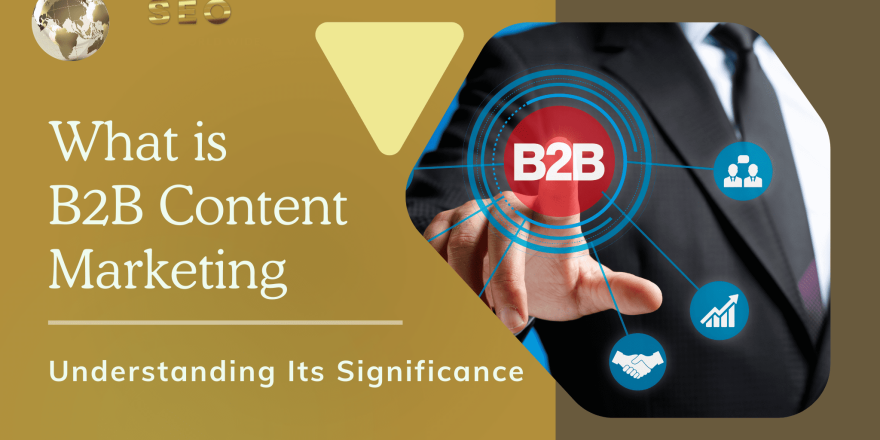In the fast-paced world of digital marketing, where every pixel on your website carries weight, it’s easy to overlook the seemingly simple “alt text” attribute. But don’t be deceived by its brevity. This unsung hero of SEO and accessibility packs a powerful punch, optimizing your website for both search engines and human users, regardless of their abilities.
Learn About: Free SEO Guide: Build quality links for better rankings
Alt text, an abbreviation for “alternative text,” plays a crucial role in both web accessibility and search engine optimization (SEO). Its primary function is to provide a textual description of images on a webpage, offering benefits for users with visual impairments and search engines alike. In this comprehensive guide, we’ll delve deeper into the importance of alt text, exploring its benefits, best practices, and providing examples of good and bad alt text. Additionally, we’ll highlight tools and resources to optimize alt text effectively.
Importance of Alt Text:
Alt text serves a dual purpose, addressing accessibility concerns and contributing to SEO strategies. Understanding the significance of alt text is essential for creating a website that is both inclusive and search engine-friendly.
Accessibility Benefits:
1. Inclusive Experience: Alt text ensures that individuals with visual impairments have equal access to information and engagement on your website, promoting inclusivity.
2. Screen Reader Compatibility: Screen readers rely on alt text to narrate image content, making your website accessible to a broader audience with diverse needs.
3. Compliance with Guidelines: Adhering to Web Content Accessibility Guidelines (WCAG) recommendations for alt text demonstrates a commitment to inclusivity and compliance with accessibility regulations.
SEO Benefits:
1. Image Ranking: Optimized alt text aids search engines in understanding the context and relevance of images, potentially boosting their ranking in image search results.
2. Page Ranking: Well-written alt text contributes to a more informative and engaging page, influencing overall page ranking by providing a rich user experience.
3. Organic Traffic: Increased image visibility in search results can lead to more organic traffic from users actively searching for images related to your content.

Best Practices for Writing Effective Alt Text:
Following best practices ensures that your alt text is not only accessible but also contributes positively to your SEO efforts.
1. Accuracy: Clearly and concisely describe the image content, focusing on the main elements and functionality to provide an accurate representation.
2. Keyword Relevance: Include relevant keywords naturally within the alt text to enhance SEO, but avoid overloading it with keywords (keyword stuffing).
3. Context: Consider the surrounding text and overall page content to ensure the alt text provides appropriate context for a comprehensive understanding.
4. Conciseness: Aim for brevity while effectively conveying the essence of the image. Ideally, keep alt text under 125 characters to maintain readability.
5. Specificity: Avoid generic descriptions like “image” or “photo.” Be specific about the content and action depicted in the image for a more informative description.
Examples of Good and Bad Alt Text:
Understanding the difference between good and bad alt text is crucial for crafting effective descriptions that enhance accessibility and SEO.
Good:
• Image of a group of diverse people hiking in a forest: “A group of friends enjoying a scenic hike through a lush forest trail.”
• Image of a product shot of a running shoe: “Lightweight running shoes with breathable mesh and responsive cushioning for optimal performance.”
Bad:
• Image of a mountain landscape: “Mountain”
• Image of a woman using a laptop: “Person working on a computer”
Additional Best Practices:
1. Descriptive Language: Use descriptive language that paints a vivid picture of the image, allowing users to form a mental image if they cannot see it.
2. Action-Oriented Text: If the image depicts an action or dynamic element, incorporate this into the alt text to convey a sense of movement or activity.
3. Lists and Tables: For images containing lists or tables of information, summarize the key points in the alt text to ensure all users have access to the data.
4. Avoid Repetition: If an image is repeated on a page for decorative purposes, use empty alt text (alt=””) to indicate that it doesn’t convey essential information.
Tools and Resources for Optimizing Alt Text:
Utilizing the right tools can streamline the process of optimizing alt text for accessibility and SEO.
Screen Reader Testing Tools:
1. JAWS: Job Access With Speech (JAWS) is a popular screen reader that allows you to experience your website from the perspective of a screen reader user.
2. NVDA: NonVisual Desktop Access (NVDA) is another widely used open-source screen reader for testing and optimizing your website’s accessibility.
Image SEO Plugins:
1. WordPress SEO Plugins: Plugins like Yoast SEO or Rank Math for WordPress can help you manage and optimize your image alt text efficiently within the content management system.
2. Drupal SEO Modules: If your website is built on Drupal, consider using SEO-focused modules like SEO Checklist or Metatag to enhance alt text optimization.
Accessibility Evaluation Tools:
1. WAVE (Web Accessibility Evaluation Tool): WAVE is a browser extension that evaluates the accessibility of your website, identifying issues related to alt text and other accessibility features.
2. Lighthouse: Lighthouse, an open-source, automated tool for improving the quality of web pages, can be used to audit your website and identify areas for improvement, including alt text optimization.
Conclusion:
While it may seem like a minor detail, alt text is a powerful tool with the potential to significantly impact your website’s accessibility, SEO performance, and ultimately, its success. By prioritizing alt text optimization and making it an integral part of your content creation process, you can ensure your website caters to a broader audience, attracts more organic traffic, and provides a truly inclusive and informative experience for everyone.
Additional Tips:
• Use hyphens (-) to separate keywords in your alt text for better readability.
• Avoid using generic phrases like “a picture of” or “an image of.”





